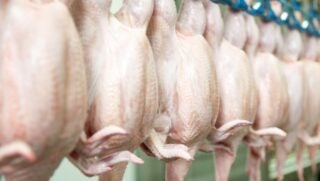Kansas State University researchers may have just discovered a soybean variety that could save the industry millions of dollars each year.
Harold N. Trick, professor of plant pathology; Timothy C. Todd, instructor of plant pathology; and Jiarui Li, research assistant professor in plant pathology, have designed and patented a soybean variety that protects from nematode parasitic infestation.
Soybeans are the second largest crop in the U.S. and bring in about $37 billion each year. But nematode parasites — the No. 1 soybean disease in the nation — plague the crop with stunting, chlorosis, wilting and higher susceptibility to other diseases.
“Basically, we’ve designed a soybean variety that fights back against parasites,” Trick said in a Kansas State release. “It affects nematodes by stopping their reproduction cycles.”
The researchers identified genes in nematodes that are necessary to the parasite’s function and survival. They then developed a soybean variety that silences those genes.
“We have found a solution that controls nematodes and is more durable and broadly applicable than traditional resistance,” Todd said. “The other really cool thing about this approach is it’s specific to the nematode, so no one has to worry about it causing any type of damage beyond stopping the parasite. It’s very environmentally friendly.”
The patent was issued to the Kansas State University Research Foundation, a nonprofit corporation responsible for managing technology transfer activities at the university.
The researchers’ next steps are to continue refining the soybean variety, identify a commercial partner and make the crop variety available to farmers. Their approach also showed promising results for controlling nematodes in anthurium, a floral plant, so the technology could potentially control nematode problems in other crops as well, according to Li.


